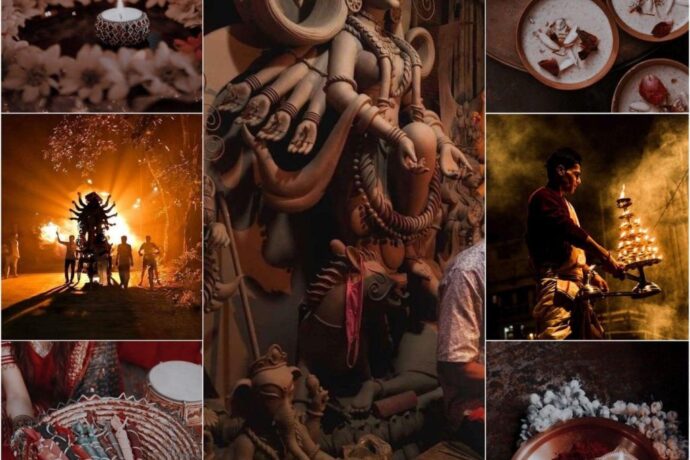When you’re strolling by way of a brand new exhibition, it may be useful to have a information to inform tales concerning the nation the place a piece was created or level out particulars about supplies, strategies and imagery, reminiscent of cranes, with a particular which means.
The new exhibition Weaving Splendor: Treasures of Asian Textiles at The Nelson-Atkins Museum of Art options works hardly ever on view from throughout Asia, relationship from the 16th century to the current — together with wall hangings, furnishings, costumes, and “a carpet made for kings.”
We requested three Nelson-Atkins curators to speak about a few of their favorites.

courtesy: The Nelson-Atkins Museum of Art
Hanging with Hōō and Pine Tree, Japan, late 1800s–1920s.
Japan
Yayoi Shinoda is the assistant curator of East Asian Art on the Nelson-Atkins and her analysis focus stretches from medieval to early fashionable Japan. Shinoda’s decide known as Hanging with Hōō and Pine Tree dates from the late 19th into the early 20th century.
“This fully embroidered hanging demonstrates the embroiderers’ technical mastery to use silk and gold-wrapped silk threads to create a painting-like work,” she says.
“A closer look reveals an array of embroidery techniques the embroiderers used to create different textures, such as the smooth surface of birds’ feathers and the rough pine tree bark, that enliven the scene.”

Courtesy: The Nelson-Atkins Museum of Art
Hanging with Lantern Design. China, Ming dynasty (1368–1644), 1400s–1500s.
China
Ling-en Lu is the curator of East Asian Art and joined the museum workers in 1999. There are two works within the exhibition that she doesn’t need guests to overlook.
The first, Hanging with Lantern Design, a silk and metallic thread brocade, dates again to the Ming dynasty in China (1368–1644) within the 15th and 16th centuries.
“The lustrous lanterns and florals glow on the dark blue background of this brocade hanging, recalling the luminaries that brighten the chilly winter evening of Lantern Festival,” describes Lu.
“On the fifteenth day after the Lunar New Year, Lantern Festival is among the favorite celebrations in many Asian countries.”
Lu’s second highlighted work, a gown created for royalty, can be from China. One Hundred Cranes Imperial Robe dates from the Qing dynasty (1644–1911) within the late 17th and early 18th centuries.
“Talented textile artists enhanced the formal style of this dragon robe with complex embroidery,” Lu says.
“They achieved the detail of a painting, covering the silk damask fabric with dragons, pine trees, waves, cranes, and peaches that carried positive meanings for the owner – Prince Guo (1697–1738).”

Courtesy: The Nelson-Atkins Museum of Art
Carpet within the ‘Polonaise’ Style, Isfahan or Kashan, Iran, Early 1600s.
Iran
Kimberly Masteller, curator of South and Southeast Asian Art since 2008, says one work “dominates the gallery within the second half of the exhibition.” It’s a grand Persian carpet.
“Look carefully, and you will notice traces of metallic brocade glinting between colourful flowers, scrolling vines, and leaves, created in silk pile,” Masteller describes. “This was a carpet made for kings, and these carpets in the ‘Polonaise’ style were created in the royal workshops of Shah Abbas I in Iran as diplomatic gifts and luxurious exports.”

Courtesy: The Nelson Atkins-Museum of Art
Rumal Square Shawl, Kashmir, India, c. 1870.
India
Masteller additionally desires to verify guests do not miss a well-known export from India: the Kashmir scarf.
“It is well known because it was such a luxurious and desirable fashion item in Europe in the 18th and 19th centuries, the Hermes scarf of its day,” says Masteller. “We are exhibiting a sq. scarf created round 1870 that’s fully crammed with intricately woven patterns and embroidered particulars.”
She provides, “It is a knockout, and it’s simple to see why these had been in style everywhere in the world.”
Weaving Splendor: Treasures of Asian Textiles, Sept. 25, 2021 – March 6, 2022, The Nelson-Atkins Museum of Art, Kansas City, Missouri.








